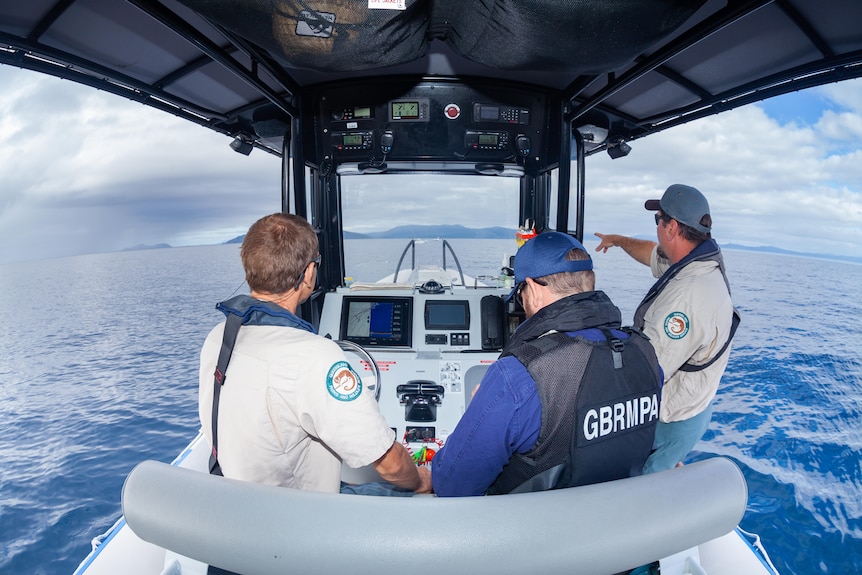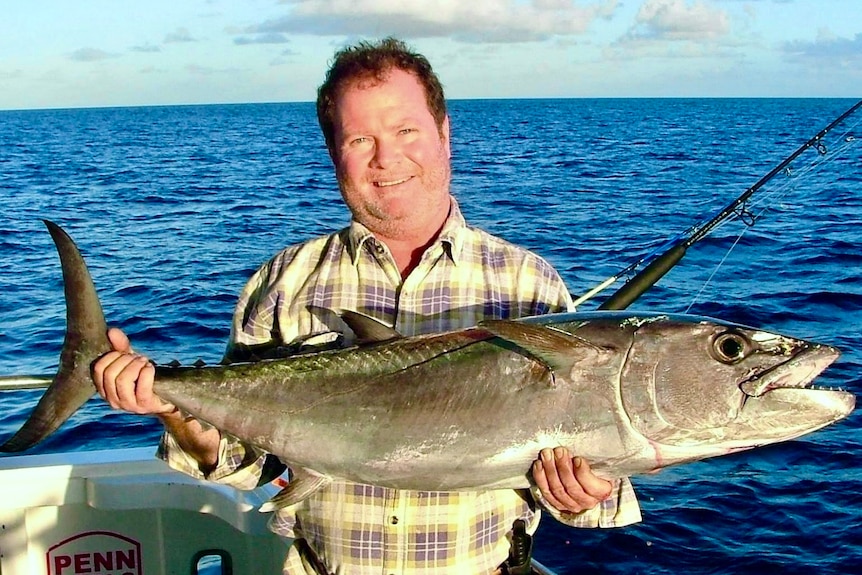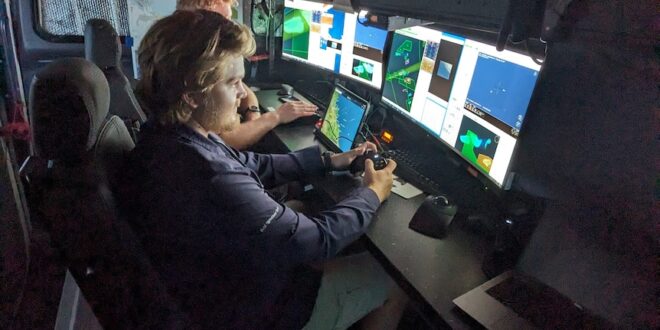Life for illegal fishers off the coast of Queensland just got harder thanks to a successful trial of new drone technology.
A drone with advanced capabilities was launched from its Gladstone base for testing over summer, as eager fishers took to the southern regions of the Great Barrier Reef.
Its mission was to protect the Capricorn and Bunker Group of islands and reefs, an area well-known to authorities as a haunt for illegal fishers.
Dubbed an “absolute success”, the trial gathered intelligence on vessels fishing out of bounds in protected green zones.
It means the new Aerosonde 4.7 drone is now the new weapon of choice in the fight to protect one of Australia’s most treasured natural resources.
Out of sight
The Aerosonde 4.7 is a long-range beyond visual line of sight (BVLOS) drone, which travels under the veil of darkness, collecting photographic, video and radar evidence.
It has a gimbal camera containing daylight infrared and ultra zoom lenses, with a combination of optical, heat, radar and other sensors used to detect movement at high altitudes.
The drone has a dash speed of 120 kilometres per hour, an endurance of up to 18 hours, and can be launched from islands as well as patrol vessels.
Great Barrier Marine Park Authority (GBMPA) director for field management operations Chris Cochrane said intelligence strategies had featured within the authority’s compliance program for more than a decade.
“[The new drones] are virtually undetectable by illegal fishers … and they can loiter for longer to gather quality evidence and increase the chances of successful prosecutions in court,” Mr Cochrane said.
“That’s important because these types of offenders can take large numbers of fish quite quickly from green zones.
“It also makes it unnecessary to deploy helicopters and patrol crews to secure an arrest.”
Surveillance in the area was previously conducted with smaller drones that travelled with less speed and at lower altitudes.
They also did not fly as far and were more easily seen by illegal fishers.
Mr Cochrane said smaller, less capable drones still had a place in surveillance missions but were not as effective at capturing evidence before it was destroyed or hidden.
“We need to increase the level of risk, [so] people who offend think the chances of being caught are too high, and the consequences too undesirable,” he said.
The GBMPA official said the current push was not just about prosecuting illegal fishers.
“It’s about educating fishers also, so everyone is aware of the regulations,” he said.
The challenge
Mr Cochrane said illegal fishing threatened the fragile reef.
“The reef has experienced widespread bleaching, which essentially means that we have to do as much as we can to take away some of those external pressures,” Mr Cochrane said.
“Illegal fishing is one of those things … and it’s very important that everyone does the right thing and follows the zoning rules and allows the reef to recover.”
Mr Cochrane said about 600 recreational fishing offences were recorded each year, which accounts for half of all the offences recorded for the marine park annually.

“So, in terms of numbers, it’s high level,” Mr Cochrane said.
“But we do have 1.3 to 1.4 million individual fishing trips in the marine park each year.
“So, it is still a small percentage.”
The drone program, a collaboration between the GBMPA and the Department of Climate Change, Energy, the Environment and Water (DCCEEW), is reporting good results.
‘Fines need to be higher’
Recreational fisher Tony Minto said he had been fishing the Great Barrier Reef for 45 years and regularly visited Swains Reef and Cario Bay, north of Yeppoon.
“There’s a lot of illegal fishing there due to the size of jurisdiction and limited patrolling,” Mr Minto said.
He said he once saw an illegal haul of 500 kilograms of mainly snapper pulled from a green zone near K’gari (Fraser Island) and sold to a retailer.
“Yes, it’s prevalent and it happens under the cover of darkness,” Mr Minto said.

The fisherman said he had seen surveillance planes in the past, but their noise and visibility gave them away.
“[The drone] sounds like a good deterrent but the fines need to be higher, or the reward will still outweigh the penalties,” Mr Minto said.
“Introducing licences for recreational fishers would also help, as well as increasing commercial licences to curb the black market and ceasing the import of seafood.”
A balancing act
Queensland Seafood Industry Association executive officer David Bobberman said balancing conservation and fishing was a common interest.
He said illegal fishing could affect the commercial sector.
“[Illegal fishing means] Fisheries Queensland can underestimate the recreational effort and take, which then has a flow on effect for the stock assessments and harvest strategies,” Mr Bobberman said.
“It puts everything at risk … and potentially delays the rebuilding of the stock for all fishers into the future.”
Although opposed to the return of a recreational fisher’s licence, Mr Bobberman said he agreed a crackdown on the black market would help to stop illegal fishing.
“The black market is rife,” Mr Bobberman said.
He said fish such as barramundi were being sold to retailers willing to evade authorities resulting in the catch going undetected as it was untraceable.
“Drones today [are good] … but one day technology may provide a nirvana situation where we can trace and track to protect our premium product,” he said.
Get our local newsletter, delivered free each Wednesday
 Unmanned Aerial Vehicle The latest drone news
Unmanned Aerial Vehicle The latest drone news



